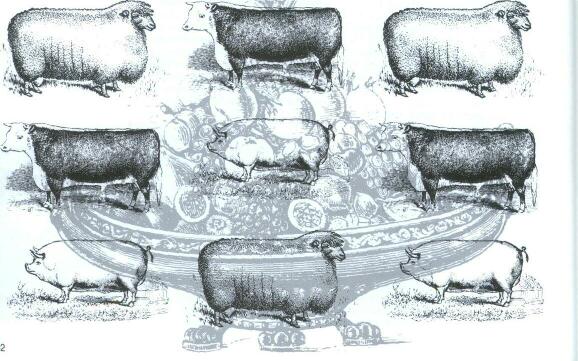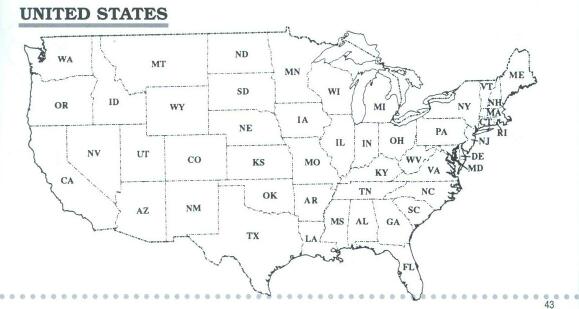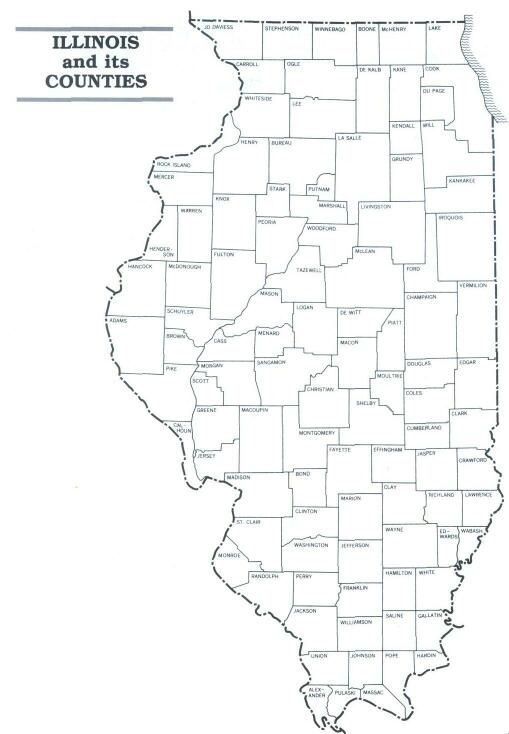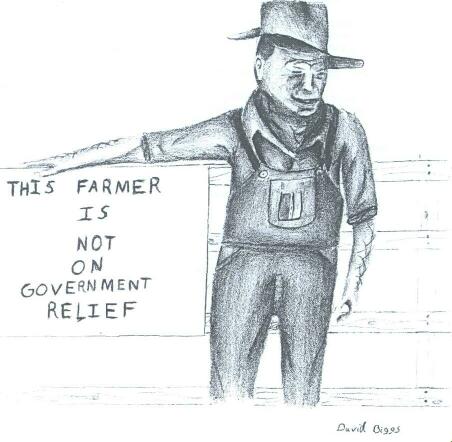|
Overview
Main Ideas
A small group of indignant farmers in
McDonough County, Illinois, created the
Corn Belt Liberty League to oppose the
New Deal's Agricultural Adjustment Act of
1938. They were convinced that the legislation brought an unwelcome control over
their private lives and interfered with their
freedom to farm as they wished. The discovery of a cache of correspondence to the
league has revealed the depth and breadth
of farmer dissatisfaction throughout the
Midwest and across the nation. Men and
women who considered themselves just
"dirt farmers" challenged the
power of the federal government and the Farm
Bureau. They saw their
"rebellion" as taking a
stand for the freedom and
liberty of independent
farmers.
Connection with the Curriculum
This material may be used to teach
Illinois and U.S. history, government, or
sociology.
Teaching Level
Grades 8-12
Materials for Each Student
• A copy of this article's content portion
• Handouts 1 through 3
• Colored pencils, pen or pencil, drawing
or construction paper
Objectives for Each Student
• Compare and contrast farmers'
attitudes about New Deal legislation.
• Make inferences about the extent of
farm protest in the late 1930s.
• Understand the significance of primary
sources in historical investigations.
SUGGESTIONS FOR
TEACHING THE LESSON
|
Opening the Lesson
Hold a class discussion on the factors
that have always made farming a precarious
industry: weather, prices, production costs,
surplus production, and foreign competition.
Brainstorm student attitudes about the role
of government in the farming industry.
Construct a timeline on the board or overhead that previews the important events
covered in the article. It will be necessary to
read the article aloud in junior high classes
in order that difficult terms and concepts
may be explained. High school students
may read the article for homework.
41
Developing the Lesson
Each student should complete Activity 1
in class. Students could be placed in groups
of five for Activity 2. Each student could
role-play one of the speakers to help their
group members get a better idea of how to
write the letter to the editor. The assignment
could be completed as homework.
Outstanding letters could be posted in class.
Concluding the Lesson
Complete the study question part of
Activity 3 in class discussion. Then allow
adequate class time for students to brainstorm ideas for their posters and to draw
and color them. This activity should not be
rushed.
Extending the Lesson
Students should develop a limited topic
of their choice and identify where they might
discover primary sources similar to those
investigated by the author of the article.
They could begin with their own families
and extend their thinking to historical museums, local businesses or industries, or university archives. An oral history project
would further extend students' understanding of the field and deepen their awareness
and appreciation of historical research.
A debate about recent attempts to "dismantle the welfare state," including some of the
agriculture programs whose roots were in
the New Deal, might prove challenging to
students.
Assessing the Lesson
Activity 3 could be used as an assessment tool, especially if students are required
to display and explain their art work.
Another type of assessment is to have
students create a diary of one of the Corn
Belt Liberty League's organizers. The diary
should reflect that the most active members
actually held two jobs: farmer by day and
protest organizer by night. Also, have
students compare and contrast the government's agriculture theory based on "scarcity"
with the agricultural theory of the Corn Belt
Liberty League based on "plenty."
42

"Collectively, the letters [of support sent to the Corn Belt Liberty League] show that dissatisfaction with the New Deal legislation was more widespread than politicians of the time,
and historians of later years, realized." Complete the map activity to highlight the author's
conclusion, which refutes the suggestion that most farmers eagerly embraced the New Deal
farm policy and that the league attracted only local support.
Place Macomb, the origin of the Corn Belt Liberty League, on the map.
Then, use a different color for each of the following:
- The counties in west-central Illinois that established units of the league:
McDonough, Warren, Bureau, Adams, Winnebago, Marshall, Cass,
Knox, Whiteside, Henry, Hancock, Fulton, Mercer, Putnam, Ogle,
Livingston, DeKalb, and Lee
- The counties in east-central Illinois that established units of the league:
Vermilion, Champaign, and Edgar
- Midwestern states that sent representatives to meetings or requested information:
Iowa, Kansas, Michigan, Minnesota, Missouri, Nebraska, and Wisconsin
- Indiana, which was granted a state charter
- Southwestern Ohio, where nine counties offered support to the league
- States outside the Midwest that sent letters of inquiry and support:
Alabama, Arizona, Arkansas, California, Connecticut, Florida, Kentucky,
Louisiana, Massachusetts, Maryland, Mississippi, Montana, New Jersey,
New Mexico, New York, North Dakota, Oklahoma, Pennsylvania, South
Carolina, South Dakota, Tennessee, Texas, and Virginia, as well as Washington, D.C.
43
44

DIRECTIONS: Choose two of the speakers below who have different opinions about the
New Deal farm program. Use the excerpts from these primary sources as the basis for
contrasting letters-to-the-editor that could have appeared in a newspaper between 1938
and 1940. You should attempt to maintain the tone established by each speaker and to
provide support for each speaker's position.
Speaker 1: Raymond Brown of Pana, Illinois
"I want to line up with the 'rebels' in this protest against the notorious New Deal Farm
Program which is not only unworkable in this land of FREE people but is an insult to the
intelligence of the American farmer."
Speaker 2: Grover Dobson of Douglas County, Illinois
"Complaining to your neighbor across the fence may be convenient but it won't get us
very far. Joining up with organizations which spring up over night and are full of radicalism,
idle gossip and prejudice is a detriment to us all."
Speaker 3: John E. Waters of Madison, Wisconsin
"The whole setup of the crop-control bill is designed to establish a dictatorship over
agriculture. Every day the New Deal bites off a little of the freedom of the American people.
Unless this is checked we will be in the same boat with the people of Russia."
Speaker 4: J. Scott Campbell of Elwood, Indiana
"You boys out there don't understand this farm program .... Get this dictatorship out
of your system. You always have had a dictator when you got ready to sell anything. It is
no worse for one to tell you how much to raise than it is to tell you what it is worth after it
is raised."
Speaker 5: Floyd Brackney in American Liberty Magazine
"Mr. Farmer don't kid yourself any longer into believing some big-hearted politician or
industrialist will come along and give you something for nothing. The Lord helps those
who help themselves."
45

|
Analysis of a Visual Source/Creation
of a Visual Source
|
Finley Foster, a founder of the Corn Belt Liberty League, drew the attention of major
newspapers in Chicago and New York City when he posted this sign below on his farm north
of Macomb in 1940. When interviewed by Lynnita Sommer one month before his death in
1990, Foster said: "You're looking at an old man that never took a dime off the government
in his life for not farming land." David Biggs, an eighth grader at Arcola Junior High School
sketched this representation of Foster and his controversial sign.
46

Analysis of a Visual Source/Creation
of a Visual Source
- What did Finley Foster mean by the term "government relief?"
- What was the purpose of the sign? Who was Foster attempting to reach, and what did
he want them to think or how did he want them to act?
- Foster reported that the sign was first stolen, then recovered when he offered a reward.
Later, it was again stolen and cut with a torch. What can you infer about the values,
beliefs, attitudes, and emotions of farmers on the topic of New Deal farm legislation?
- How do you think Finley Foster's career as a farmer and his life as a member of the
community may have been affected by maintaining this attitude throughout his life?
- The Corn Belt Liberty League never had an official logo, button, or sign. Based on your
understanding of their protest movement, create a poster that could have served as a
visual representation of its members' values, goals, and strategies.
Click Here to return to the Article
47
|





